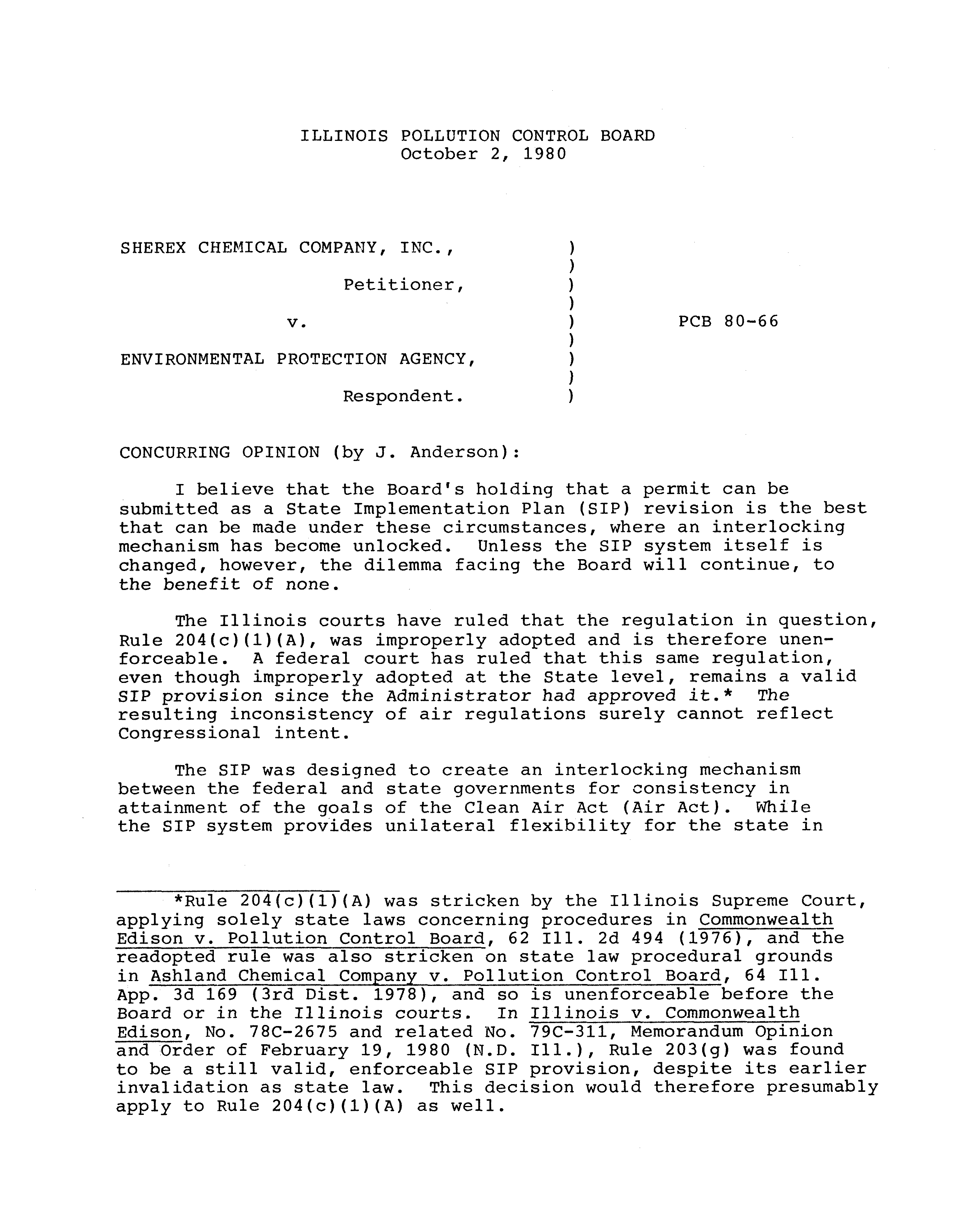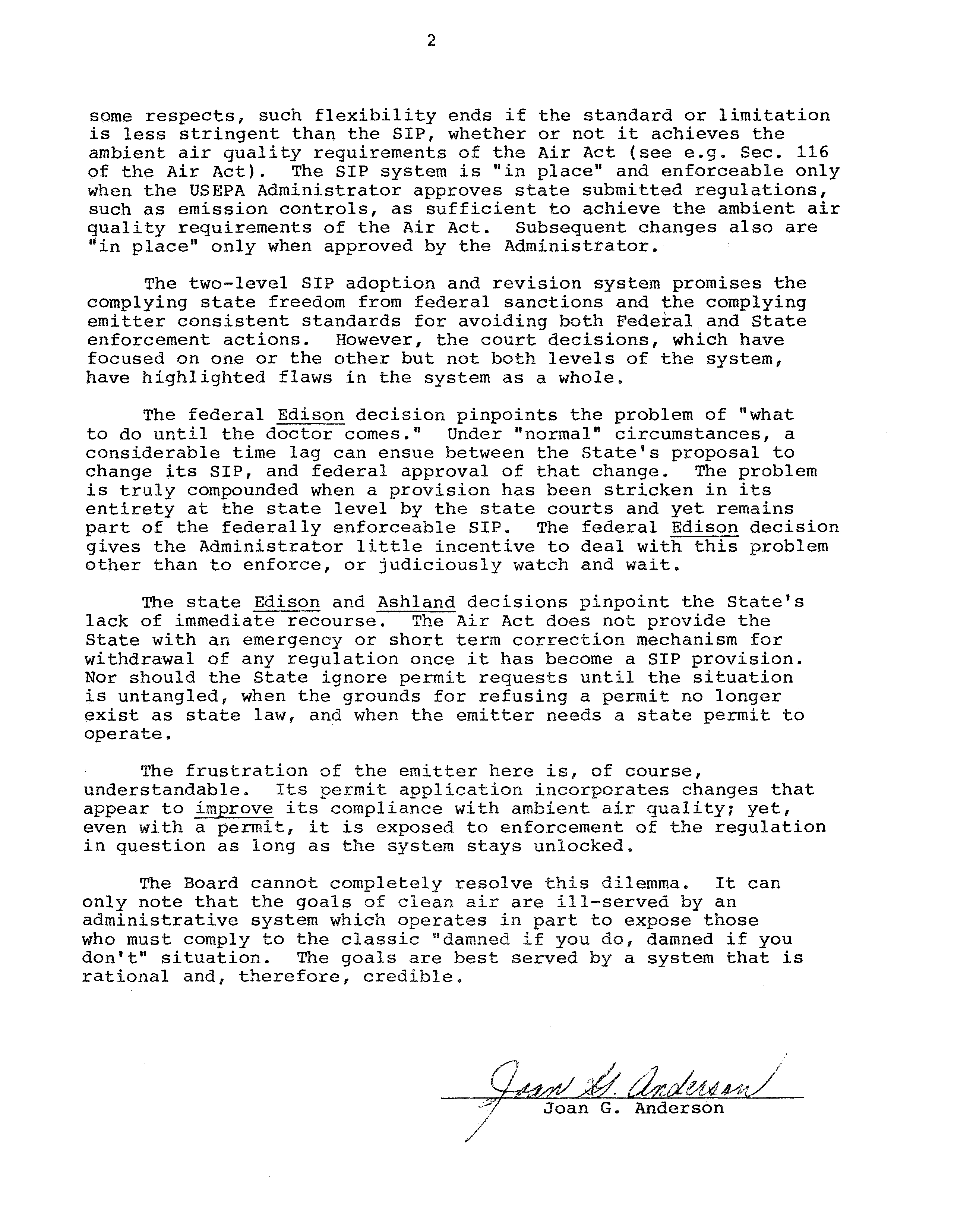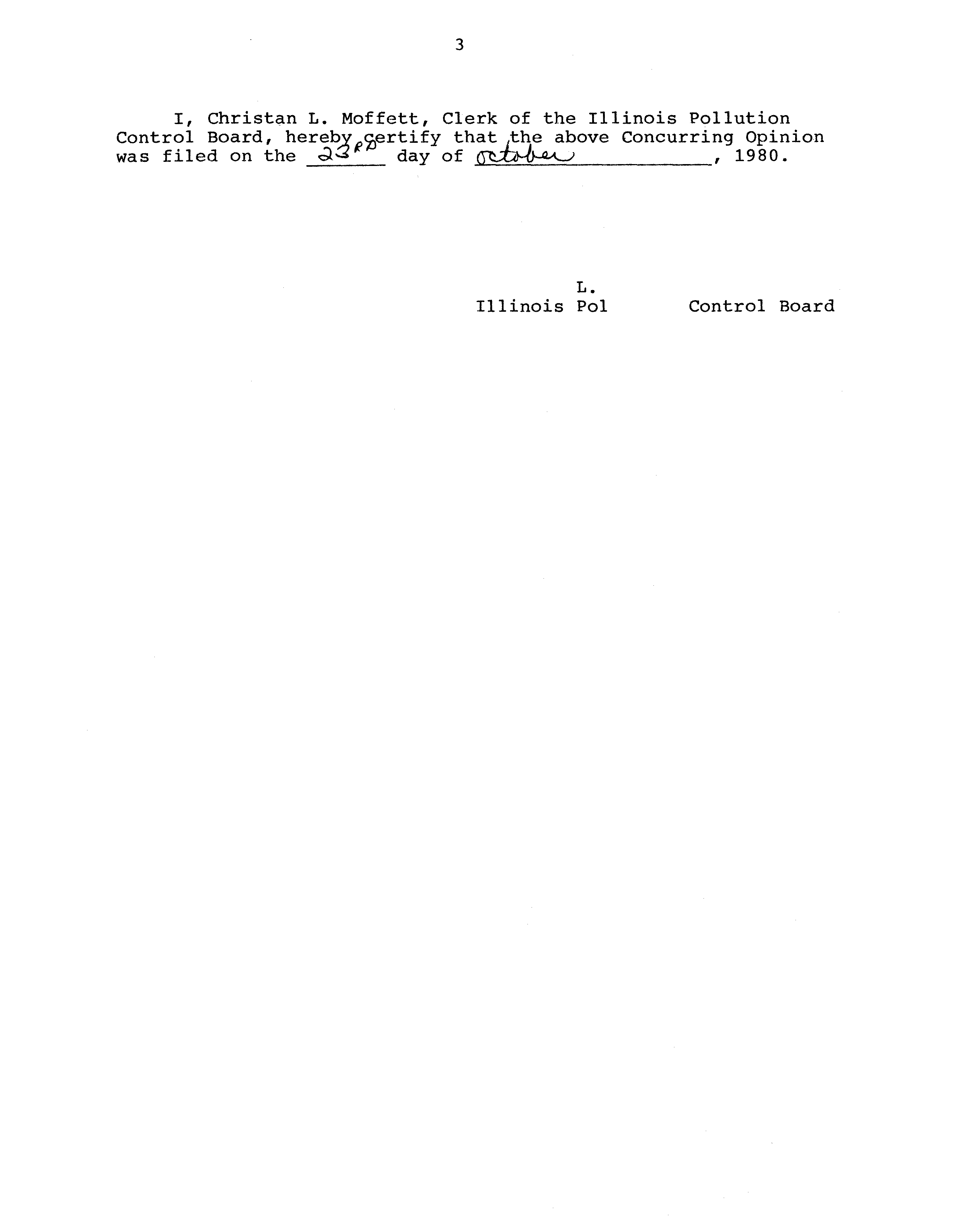ILLINOIS POLLUTION CONTROL BOARD
October
2,
1980
SHEREX CHEMICAL COMPANY, INC.,
Petitioner,
v.
)
PCB 80—66
ENVIRONMENTAL PROTECTION AGENCY,
Respondent.
CONCURRING OPINION
(by ~J.Anderson):
I believe that the Board’s holding that a permit can be
submitted as a State Implementation Plan
(SIP)
revision is the best
that can be made under these circumstances, where an interlocking
mechanism has become unlocked.
Unless the SIP system itself is
changed, however,
the dilemma facing the Board will continue,
to
the benefit of none.
The Illinois courts have ruled that the regulation in question,
Rule 204(c)(1)(A), was improperly adopted and
is therefore unen-
forceable.
A federal court has ruled that this same regulation,
even though improperly adopted at the State
level,
remains a valid
SIP provision since the Administrator had
approved it.*
The
resulting inconsistency of air regulations surely cannot reflect
Congressional
intent.
The SIP was designed to create an interlocking mechanism
between the federal and state governments for consistency in
attainment of the goals of the Clean Air Act (Air Act).
While
the SIP system provides unilateral flexibility for the state in
*Rule 204(c)(1)(A) was stricken by the Illinois Supreme Court,
applying solely state
laws concerning procedures in Commonwealth
Edison v.
Pollution Control Board,
62
Ill.
2d 494
(1976), and the
readopted rule was also stricken on state law procedural grounds
in Ashland Chemical Company v. Pollution Control Board,
64
Ill.
App.
3d 169
(3rd Dist.
1978),
and so
is unenforceable before the
Board or in the Illinois courts.
In Illinois
v.
Commonwealth
Edison,
No. 78C—2675 and related No. 79C-311, Memorandum Opinion
and Order of February 19, 1980
(N.D.
Ill.),
Rule 203(g) was found
to be a still valid, enforceable SIP provision,
despite its earlier
invalidation as state law.
This decision would therefore presumably
apply to Rule 204(c)(1)(A) as well.
2
some respects, such flexibility ends if the standard or limitation
is less stringent than the SIP, whether or not it achieves the
ambient air quality requirements of the Air Act
(see e.g. Sec.
116
of the Air Act).
The SIP system is “in place” and enforceable only
when the USEPA Administrator approves state submitted regulations,
such as emission controls,
as sufficient to achieve the ambient air
quality requirements of the Air Act.
Subsequent changes also are
“in place” only when approved by the Administrator.
The two—level SIP adoption and revision system promises the
complying state freedom from federal sanctions and the complying
emitter consistent standards for avoiding both Fede~aland State
enforcement actions.
However,
the court decisions,
which have
focused on one or the other but not both levels of the system,
have highlighted flaws
in the system as a whole.
The federal Edison decision pinpoints the problem of “what
to do until the doctor comes,”
Under “normal” circumstances,
a
considerable time lag can ensue between the State’s proposal to
change its SIP,
and federal approval of that change.
The problem
is truly compounded when a provision has been stricken in its
entirety at the state
level by the state courts and yet remains
part of the federally enforceable SIP.
The federal Edison decision
gives the Administrator little incentive to deal with this problem
other than to enforce, or judiciously watch and wait,
The state Edison and Ashland decisions pinpoint the State’s
lack of immediate recourse.
The Air Act does not provide the
State with an emergency or short term correction mechanism for
withdrawal
of any regulation once it has become
a SIP provision.
Nor should the State
ignore permit requests until the situation
is untangled,
when the grounds for refusing a permit no longer
exist as state
law, and when the emitter needs a state permit to
operate.
The frustration of the emitter here is,
of course,
understandable,
Its permit application incorporates changes that
appear to improve its compliance with ambient air quality; yet,
even with a permit,
it
is exposed to enforcement of the regulation
in question as long as the system stays unlocked.
The Board cannot completely resolve this dilemma.
It can
only note that the goals of clean air are ill—served by an
administrative system which operates in part to expose those
who must comply to the classic “damned if you do, damned if you
don’t” situation.
The
goals are best served by a system that is
rational
and, therefore, credible.
Joan G. Anderson
/
/
3
I,
Christan L. Moffett, Clerk of the Illinois Pollution
Control Board, hereby~ertifythat the above Concurring Opinion
was filed on the
~
day of
___________________,
1980.
L.
Illinois Pol
Control Board




